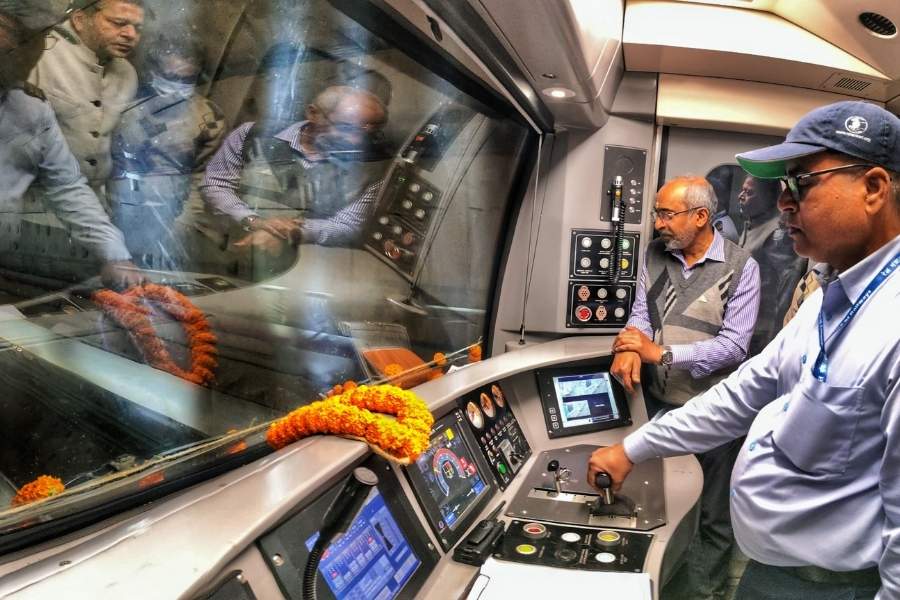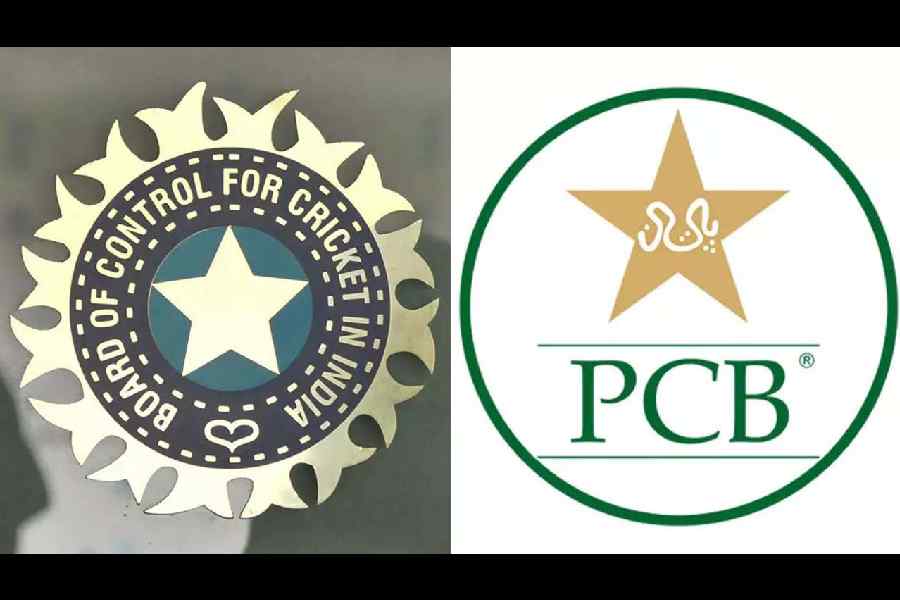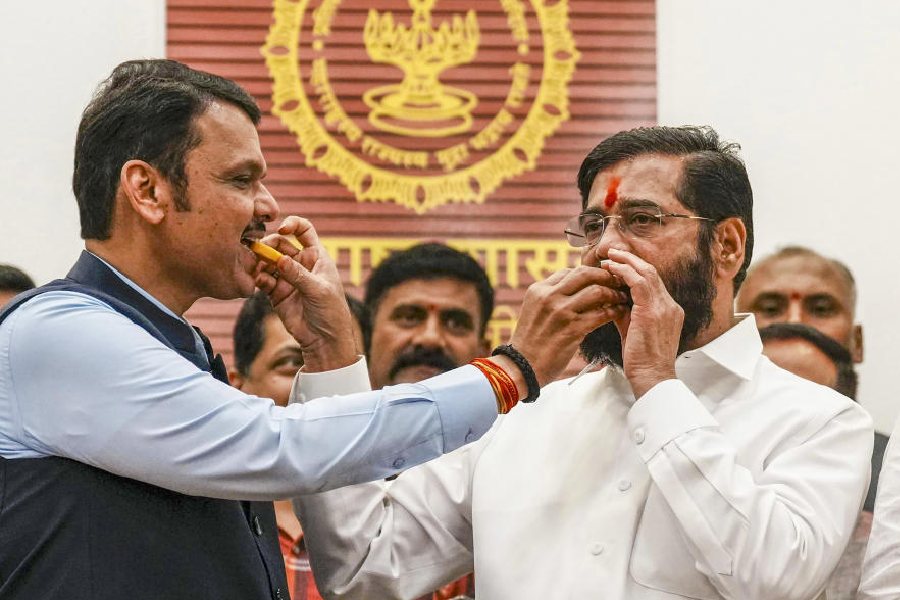 Wednesday, 22 January 2025
Wednesday, 22 January 2025
 Wednesday, 22 January 2025
Wednesday, 22 January 2025
India celebrates the 25th anniversary of Kargil Vijay Diwas on July 26. On this day 25 years ago, the Kargil War, which began when shepherds taking their livestock to graze in the high altitudes along the Line of Control in the Kargil-Drass sector of Jammu and Kashmir noticed armed men, was officially declared as over. The Pakistan army intruders took up positions in the heights overlooking the strategically key portion of National Highway 1 that joins Srinagar to Leh. Indian soldiers valiantly took back the positions, earning glory and becoming part of the national consciousness.
Some soldiers from the war have become icons, such as Captain Vikram Batra of 13 JAK Rifles, dubbed the ‘Sher Shah’ of Kargil. Batra captured Point 4875 and Point 5140, where he famously declared "Yeh Dil Maange More!" to signal triumph, before continuing to lead his troops despite severe injuries. He was awarded India’s highest military honour, the Param Vir Chakra, posthumously.
Here are some more soldiers from the Kargil War who gave their all to make the victory possible.
Lieutenant Manoj Kumar Pandey: ‘If death strikes before I prove my blood, I swear, I will kill death’
A brilliant student from Sainik School, Lucknow, the Sitapur, Uttar Pradesh native Manok Kumar Pandey always dreamt of wearing the Indian Army uniform. At his National Defence Academy (NDA) interview, he was asked why he wanted to join the army, his father had recounted in an interview. The young Manoj had said: “I want to win the Param Vir Chakra.” After graduating, he joined the Indian Military Academy (IMA), Dehradun to complete his final phase of training and was commissioned in the first battalion of the 11 Gorkha Rifles (1/11 GR), a unit renowned for its heroic exploits.
In early July 1999, the 1/11 GR was tasked to clear the Kalubhar Ridge. Lieutenant Manoj Kumar Pandey was Number 5 Platoon commander. His platoon's mission was to eliminate the enemy positions in order to keep his battalion from being daylighted and being in a vulnerable position during its advance to Kalubhar Ridge. As his platoon reached close to its objective on the night of 02/03 July 1999 it came under heavy enemy fire from the heights. Lieutenant Manoj Kumar Pandey quickly manoeuvred his platoon to an advantageous position and ordered one section of his platoon to clear enemy positions on the right, while he cleared four hostile positions on the left.
He attacked the first enemy position and killed two enemy personnel. He charged at the second position and captured it by killing two more enemy personnel. While clearing the third position, Lieutenant Pandey was hit in the shoulder and legs by enemy fire. Undaunted and unconcerned about his serious wounds, he led the assault on the fourth position, rallying his men and destroying it with a grenade. During this attack he got a fatal medium machine gun burst on his forehead. The daredevil act of the officer provided the critical firm base for the battalion to finally capture Khalubhar.
Lieutenant Manoj Kumar Pandey was awarded the Param Vir Chakra posthumously. An entry from his personal diary read:“If death strikes before I prove my blood, I promise (swear), I will kill death.”
Grenadier Yogendra Singh Yadav: Youngest to receive Param Vir Chakra
Subedar Major and Honorary Captain Yogendra Singh Yadav was born in Aurangabad Ahir, Uttar Pradesh in 1980. His father served in the Kumaon Regiment and fought in the 1965 and 1971 wars. Yadav harboured dreams of joining the army and was enlisted in the Grenadier Regiment at only 16 years and five months of age.
Grenadier Yadav was a member of the Ghatak Platoon's main unit, which was charged with capturing Tiger Hill on the night of July 3, 1999. There was a difficult, snow-bound, and steep approach to the summit. Ignoring the danger, Grenadier Yadav offered to lead and rigged a rope for his men to climb. The enemy unleashed a barrage of automatic grenades, rockets, and artillery fire, resulting in the deaths of the platoon's leader and two other members. Amid this, Grenadier Yadav crept up to quiet the enemy position, although he was wounded many times in the process.
Disregarding his injuries and the barrage of hostile gunfire, Grenadier Yadav persisted in ascending towards the enemy strongholds. He silenced the automatic fire and killed four enemy soldiers in close quarters while lobbing grenades and firing continually from his pistol. He was hit numerous times, resiliently continuing to lead the attack. His valiant efforts inspired the platoon to advance with fresh vigour on the other positions, taking Tiger Hill Top. This decisive victory sealed the fate of Pakistan’s Kargil misadventure.
Grenadier Yadav, who was 19 years old when he died, became the youngest ever recipient of the Param Vir Chakra.
In the 2004 Bollywood film Lakshya (based on the Battle of Tiger Hill), the actions of the fictional war hero Karan Shergill (played by Hrithik Roshan) is a screen adaptation depicting the heroic deeds of Yadav's platoon. The assault led by another Ghatak Platoon unit from the same regiment on Tololing was adapted as one of the prominent battle scenes in the Hindi film LOC Kargil, where Manoj Bajpai portrayed the role of Yadav.
Major Rajesh Adhikari: He died with his wife’s letter in his pocket
Major Rajesh Adhikari was born in rural Uttar Pradesh in 1970. An exceptional student, Adhikari was commissioned into the Mechanised Infantry Regiment of the Indian Army at 23 on completing his education. Affectionately called ‘Addy’ by his close friends and colleagues, Major Adhikari was a music lover under his tough demeanour who enjoyed playing the guitar and loved singing.
Major Adhikari was assigned the responsibility of securing the first footing by seizing the forward spur of the Tololing feature, where the enemy maintained a strong position, on May 30, 1999, as part of the battalion operation to seize Tololing. The opposing position was at a height of around 15,000 feet, in a dangerous mountainous area blanketed with snow. As Major Adhikari guided his unit towards the target, he came under fire from two enemy positions that supported each other with machine guns. Major Adhikari engaged the opposing position with the rocket launcher detachment right away, killing two enemy soldiers in close quarters fighting.
He was severely wounded by bullets while moving ahead, leading his sub-unit. He stormed at the second enemy post and eliminated one more enemy combatant, refusing to be evacuated. By seizing this second position at Tololing, he later made it easier to conquer Point 4590. He succumbed to his bullet wounds subsequently.
The story of the letter from Major Adhikari's wife is one of the most widely shared war anecdotes about him. As recounted by his comrades, Major Adhikari had put an unread letter from his wife in the breast pocket of his uniform, stating that he would read it in peace after taking the feature. His widow was given back the letter, still unread, covered with her husband's blood alongside his body draped in the Tricolour.
Major Rajesh Singh Adhikari was awarded Maha Vir Chakra posthumously.
Naik Digendra Kumar: With one hand, he ensured his machine gun rained hell on the enemy
Naik Digendra Kumar was born in 1969 to a Jat family in the village of Jhalar in Sikar, Rajasthan. He was enrolled into the Rajputana Rifles of the Indian Army on September 3, 1985. In 1987 he was selected for the Indian Peace Keeping Force and took part in Operation Pawan in Sri Lanka.
During the Kargil War, Naik Digendra Kumar led his company's attack on the Tololing feature while serving as the group commander for light machine guns. The aim was to seize an opposing location that was well protected. As the assault force approached its target on June 13, 1999, it was effectively under enemy fire from a well-concealed heavy machine gun, a universal machine gun, and several small weapons. This resulted in significant losses among the assault group. A gunshot struck Naik Kumar in the left arm.
He continued firing with one hand and delivered precise and deadly light machine gun fire on the attackers. He subdued the enemy as Indian troops moved closer to the target. After hand-to-hand combat, the Indian soldiers finally physically attacked and cleared the enemy position while firing an efficient covering fire. Naik Digendra Kumar was gravely injured, but his bravery ensured the target for the Assault Group in the end.
He was awarded the Mahavir Chakra for his bravery in occupying Tololing Hill, and retired in 2005.
Major Vivek Gupta: Hero of Tololing battle
Major Vivek Gupta was born in 1970 in Dehradun, Uttarakhand, to a serving army officer, Col BRS Gupta, an Army Ordnance Corps officer. From a very early age, Vivek Gupta aspired to become an army officer and was commissioned into The Rajputana Rifles in 1992.
On June 13, 1999, the 2nd Rajputana Rifles launched a battalion attack on Tololing Top in the Drass area, with Major Vivek Gupta heading Charlie Company. The unit led by him managed to close up on the enemy despite automatic and heavy artillery fire. The moment the company broke into the open, they were hit by heavy fire from all directions. The onslaught momentarily halted when three members of the company's leading section were hit. Major Gupta moved quickly and launched a rocket launcher into the enemy position, well aware that remaining in the open under the deadly enemy fire would result in further losses.
He attacked the hostile position before the startled adversary had a chance to gather himself. Major Gupta was struck by two gunshots while charging, yet he persisted in heading in that direction. After arriving at the location, he fought the enemy in severe hand-to-hand fighting and, despite being wounded, killed three enemy troops.
Drawing motivation from their officer's valiant action, the remaining members of the company stormed the opposing position, which finally resulted in the conquest of Tololing Top. However, during the subsequent battle, Major Vivek Gupta was hit by enemy bullets once again and eventually lost consciousness and succumbed to his bullets on the battlefield.
Major Vivek Gupta wrote a final letter to his father, stating: ‘Don’t worry dad, I’ll be back soon’. The letter was able to reach Col BRS Gupta’s residency by 17 June 1999, which was two days after the last rites of Major Gupta. For his supreme sacrifice, Major Gupta was awarded the Mahavir Chakra posthumously.
Rifleman Sanjay Kumar: He jumped into an enemy bunker, injured
Subedar Major Sanjay Kumar (formerly Rifleman), was born in Himachal Pradesh in 1976. In 1996, he joined the Indian Army and was posted to 13 Jammu and Kashmir Rifles (JAK RIF).
On July 4, 1999, Rifleman Sanjay Kumar offered to head the offensive column's scouting team in order to take control of the Flat Top of Point 4875 in the Mushkoh Valley. Realising the seriousness of the situation and disregarding his own safety completely, he charged into the enemy during the attack when enemy automatic fire provided heavy opposition and delayed the column. He killed three of the invaders in the hand-to-hand fighting that followed, but suffered significant injuries. He launched himself onto the second bunker in spite of his wounds. The opponent, completely caught off guard, fled, leaving a universal machine gun behind.
After grabbing the UMG, Rifleman Sanjay Kumar killed the opponent who was running away. He was bleeding heavily, yet he would not go. His courageous deed inspired his allies, and they surged upon the enemy and liberated Flat Top.
He was awarded the Param Vir Chakra for his extraordinary actions as a leading scout of the attacking column at Point 4875 in Mushkoh Valley. In February 2022, he was promoted to the rank of Subedar Major.
Captain N Kenguruse: He took off his shoes, climbed a rock face, and decimated the enemy
Captain Neikezhakuo Kenguruse, fondly known as Nimbu Sahab by his colleagues, was born in 1974 in Kohima, Nagaland. He was commissioned into the Army Service Corps (ASC) of the Indian Army on December 12, 1998 and served on attachment with the 2 Rajputana Rifles. He is the only officer from the ASC to be awarded a Maha Vir Chakra.
During the night of June 28, 1999, Captain Kengurüse led the Ghatak Platoon in the attack on Area Black Rock in the Drass Sector. He offered to carry out a risky commando operation to target an enemy machine gun station that was strategically located atop a cliff face and was seriously obstructing all accesses to the battalion's primary goal. Heavy losses were sustained as the commando unit was heavily hit by automatic and mortar fire while scaling the rock face.
Captain Kengurüse suffered an abdominal splinter wound. He was bleeding profusely, yet he prevailed and encouraged his soldiers to continue attacking. The commando unit was forced to retreat after reaching the last sheer rock face because it blocked their path to the opposing machine-gun station. In order to obtain a firm grip, the officer removed his shoes and ascended the rock wall while brandishing a rocket launcher towards the opposing position.
Captain Kenguruse then raced into the enemy position, disregarding his own safety. He personally killed two soldiers with his rifle and another two with his commando knife in a hand-to-hand struggle before succumbing to his wounds. Captain Kengurüse was single-handedly able to eliminate the enemy position that was impeding the Battalion's advancement on his own.
Captain Kenguruse was awarded the Maha Vir Chakra posthumously.
Lieutenant Balwan Singh: The tiger of Tiger Hill
Colonel Balwan Singh (then, Lieutenant) was born in 1973 in the family of decorated veteran Shobha Chand in Haryana. Fulfilling his childhood dream of joining the army, Balwan Singh joined the Officers Training. He was Ghatak platoon commander of 18 Grenadiers.
As part of a multipronged offensive, Lieutenant Balwan Singh and his Ghatak platoon were assigned to attack Tiger Hill Top on July 3, 1999 from the northeast. The path to the 16,500-foot target was ploughed under snow and lined with chasms and precipitous drops. Despite having only three months of experience, Singh approached his work with unwavering devotion. He guided and encouraged the squad as they marched for more than 12 hours under heavy artillery fire, across a highly hazardous and difficult terrain, to the chosen spur.
The opponent was completely unprepared for this manoeuvre, as his troop employed stealthy cliff assault climbing equipment to gain the summit. The enemy were frightened upon seeing the Ghataks. Lieutenant Balwan Singh was himself critically injured in the subsequent gunfight. Ignoring his wounds, he hurried to encircle the enemy, fought them in close battle, and single-handedly killed four enemy troops. He refused to be evacuated. The rest of the enemy men chose to run away rather than risk being attacked.
Lt. Balwan Singh played a key role in the conquest of Tiger Hill, one of the Drass sector's most crucial operational goals. He was awarded the Maha Vir Chakra for his achievements.
Lieutenant Keishing Clifford Nongrum: The hero of Point 4812
Lieutenant Keishing Clifford Nongrum was born in 1975 in Shillong, Meghalaya. He was an avid music lover and passionate football player. In 1997, he was commissioned in the Jammu and Kashmir Light Infantry (JAK LI).
Captain Keishing Clifford Nongrum was assigned to attack Point 4812 from the southeast during the night of June 30–July 1, 1999, as part of the operations to seize the location in the Batalik sector. Leading his column over the nearly impassable steep feature was Captain Keishing Clifford Nongrum. Upon reaching the summit, his force ran into fierce opposition from the enemy. The adversary was deeply positioned within a network of interconnecting bunkers made of rocks, and it was impervious to even artillery bombardment.
Using heavy, precise automatic fire, the enemy held down Captain Keishing Clifford Nongrum's column for about two hours. Seeing that his own fire against the enemy's reinforced position was ineffective, Captain Keishing Nongrum charged across the firing zone, completely disregarding his own safety. He killed six enemy soldiers by throwing explosives into the first position as he closed in. Then he attempted to grab the enemy's universal machine gun from the second hostile position and was shot in volley.
Captain Keishing Clifford Nongrum's bold move startled the adversary, allowing his soldiers crucial time to close up and ultimately take the position. Captain Nongrum battled bravely till despite his injuries. He refused to be taken to the hospital and succumbed on the battlefield. Point 4812 was ultimately captured as a result of his valiant actions.
Captain Keishing Clifford Nongrum is the only officer from his battalion and from his state to be awarded Maha Vir Chakra.







